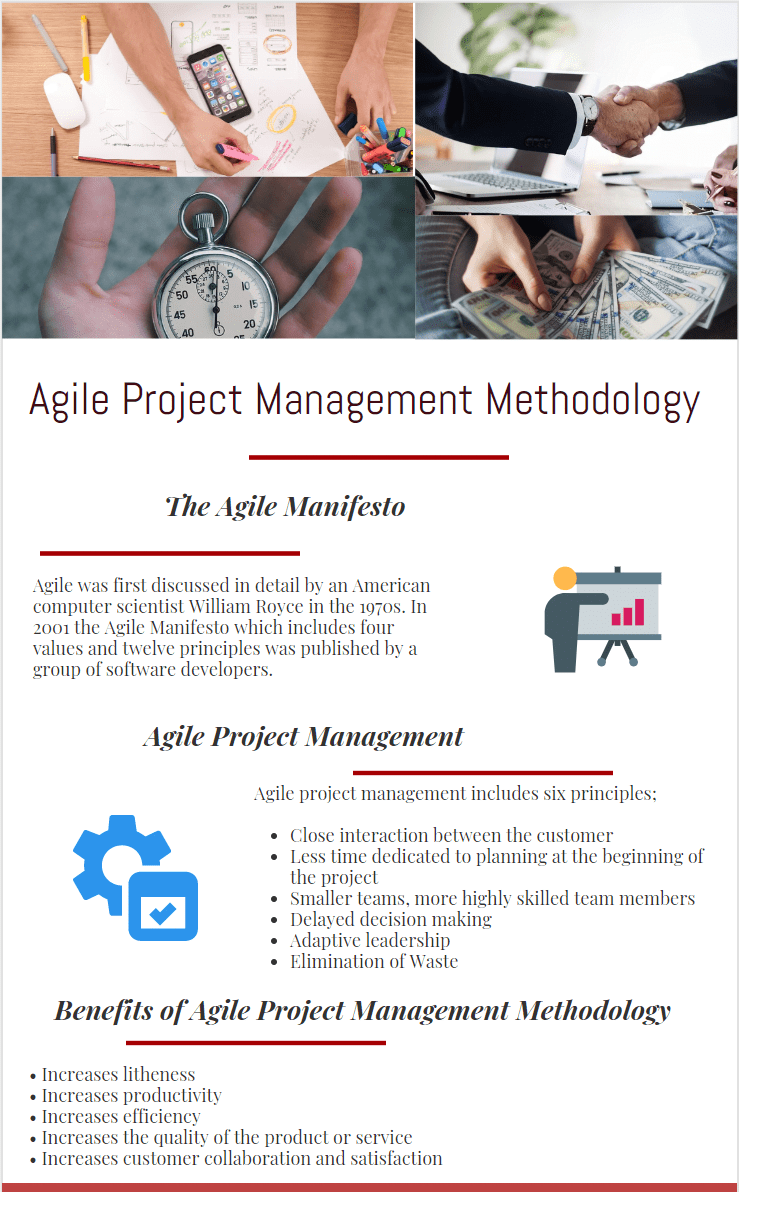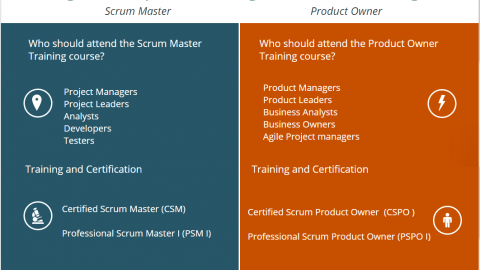Agile Project Management Methodology
Today’s compelling and time-sensitive projects require new techniques rather than traditional project management practices. Hence, agile became popular in the modern business environment as a project management methodology to make organizations more productive. A number of researchers, experts, and specialists often discuss why agility is required to complete complex tasks to deliver projects successfully. In order to clarify, agile manifesto introduces a set of values and principles to improve the development of a process, product, or service. Adopting agile practices provides many benefits such as quickly responding to a market need or increasing productivity. On the other hand, one of the drawbacks of agile is that it is not suitable if the scope is unclear.
Table of Contents
Keep on reading to explore both benefits and drawbacks of agile. Before starting, let’s take a look at the Agile Manifesto.
The Agile Manifesto
Agile methodologies bring an iterative approach to software development proces. Agile was first discussed in detail by an American computer scientist William Royce in the 1970s. In 2001 the Agile Manifesto which includes four values and twelve principles was published by a group of software developers.
Basically, the manifesto includes 4 key values and 12 principles that are applicable to software development. The purpose of this manifesto is for developing high-quality and working software.
4 key values of Agile
1. Individuals and Interactions Over Processes and Tools
2. Working Software Over Comprehensive Documentation
3. Customer Collaboration Over Contract Negotiation
4. Responding to Change Over Following a Plan
Agile project management methodology relies on agile principles.
The Agile manifesto has 12 guiding principles that aim to establish a culture for managing changes and satisfying customers.
12 principles of Agile
1. Customer satisfaction is always the highest priority and is achieved through rapid and continuous delivery.
2. Changing environments are embraced at any stage of the process to provide the customer with a competitive advantage.
3. A product or service is delivered with a higher frequency.
4. Stakeholders and developers collaborate closely on a daily basis.
5. All stakeholders and team members remain motivated for optimal project outcomes, while teams are provided with all the necessary tools and support, and are trusted to accomplish project goals.
6. Face-to-face meetings are deemed the most efficient and effective format for project success.
7. A final working product is the ultimate measure of success.
8. Sustainable development is accomplished through agile processes whereby development teams and stakeholders are able to maintain a constant and ongoing pace.
9. Agility is enhanced through a continuous focus on technical excellence and proper design.
10. Simplicity is an essential element.
11. Self-organizing teams are most likely to develop the best architectures and designs and to meet requirements.
12. Regular intervals are used by teams to improve efficiency through fine-tuning behaviors.
Agile Project Management
Many companies try to implement agile approaches to improve their market position or resource utilization, especially in software development projects.
Organizations often make an investment to develop and improve their project management system. PERT, Earned Value, Critical Path, and Critical Chain are some of the most popular techniques used along with project management systems. However, just using these techniques is not enough to bring success considering today’s projects.
It is certain that, if an organization cannot quickly respond to market needs, that need will be fulfilled by another organization. Therefore organizations must understand and appreciate these business requirements and adapt their processes quickly.
Agility can be defined as the ability to quickly respond to changing business needs. It is associated with driving something forward and having an adaptable character. Unlike traditional project management methodologies, agile deals with continuous change throughout the life cycle of a project.
Note that using agile principles does not mean replacing your current processes completely. Agile is a new approach that provides solutions to the current problems. You modify the traditional project management system to meet the agile needs of the project.
Agile project management includes six principles;
- Close interaction between the customer
- Less time dedicated to planning at the beginning of the project
- Smaller teams, more highly skilled team members
- Delayed decision making
- Adaptive leadership
- Elimination of Waste
Benefits of Agile Project Management Methodology
Agile recommends principles for developers to create high-quality software and products in an iterative and faster manner. Software development teams that adopt agile to deliver products at high speed in a collaborative environment. Hence, it improves the software development process rapidly by identifying and eliminating defects.
Below are some benefits of agile.
• Increases litheness
• Increases productivity
• Increases efficiency
• Increases the quality of the product or service
• Increases customer collaboration and satisfaction
Drawbacks of Agile Project Management Methodology
It is important to identify the best methodology considering the nature and the scope of the project. Agile is a useful methodology to increase productivity and litheness. However, agile has some drawbacks. Agile may not be suitable if the scope is unclear, the project management team is inexperienced and the requirements of the customer are uncertain. It is hard to implement this methodology in traditional organizations because of their high amount of flexibility and rigidity. Therefore adopting agile practices is difficult for this type of organization.
Agile Project Management Frameworks
Agile is an umbrella that includes various frameworks, methodologies and techniques. Each of them has its own characteristics. The most common frameworks include Scrum, Kanban, Scrumban, Lean, and Extreme Programming (XP).
Kanban
Kanban is an iterative approach like other agile project management frameworks. A Kanban board is used to represent different stages of the workflow visually. This helps team members to optimize the flow of the work easily.
Scrum
Scrum is an agile project management framework which requires three basic roles to be applied. These roles are;
- Scrum Master
- Product Owner
- Development Team
Sprints are the basic elements of scrum that refer short time-boxed periods in which scrum teams complete tasks.
Scrumban
Scrumban takes the characteristics of both Scrum and Kanban. It is a hybrid approach for planning, prioritizing, allocating and visualizing work.
Lean
Lean involves a number of management practices to improve efficiency of a process by eliminating non-value adding activities and waste.
Extreme Programming (XP)
Extreme Programming (XP) is an agile framework that focuses on developing higher quality software.
Summary
Traditional project management techniques can still provide solutions to projects with a well-defined scope and proper estimates (time and cost) like construction projects. However, most of the industry projects involve high degrees of unknowns and uncertainties.
Although Agile was first introduced and improved by software developers, it is widely used by many industries because of its collaborative and efficient nature. Agile provides many benefits including optimized development systems, increased flexibility, and reduced waste. However, agile has some drawbacks.
Other project management methodologies such as Scrum, Kanban, Lean, Scrumban, Extreme Programming can be used in conjunction with Agile.
Note that today’s challenging business environment forces project managers to be agile. Therefore project managers need to be able to plan and execute projects with flexibility and quickly. If you want to build a career in the field of project management, you should recognize the principles of agile.
See Also
Project Management Methodologies
Scrum Master Interview Questions
Further Reading

Bianca Scarlot is a technology and business leader with multi-industry experience. Throughout her career, she has provided the expertise and direction for leading-edge initiatives that included agile transformations, process reengineering solutions, and IoT service delivery innovations. She is director of AgileNova Training Academy.











